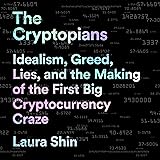Debunking Bitcoin Market Myths: Why Exchanges Can’t Run Out and Price Isn’t Too High
In January 2021, GameStop (GME) shares surged over 2,300%. This dramatic event, from approximately $5 to $120, revealed critical market truths. Exchanges simply do not “run out” of assets. This fundamental principle holds true for the Bitcoin market. As explored in the video above, fears of crypto exchanges exhausting their BTC supply are unfounded. Price discovery mechanisms prevent such scenarios. We delve deeper into these intricate market dynamics, addressing common misconceptions surrounding Bitcoin’s availability, price action, and regulatory resilience.
The Immutable Law of Price Discovery: Exchanges Never “Run Out” of Bitcoin
A common misconception among nascent crypto investors is that exchanges might one day exhaust their Bitcoin supply. This belief often stems from a traditional goods-and-services mindset. However, financial markets operate differently than a grocery store. An exchange’s function is to facilitate trade, not to store a finite inventory for sale.
When demand for a crypto asset like Bitcoin spikes, the immediate effect is a rise in its price. This elevated price acts as a powerful incentive. It entices more sellers to enter the market. Existing holders are motivated to part with their Bitcoin at higher valuations. New Bitcoin is also mined, adding to the circulating supply, albeit at a predictable rate. This constant interplay of bids and offers ensures perpetual market liquidity. The bid-ask spread simply widens or tightens. An exchange’s order book always reflects available supply and demand at various price points.
Consider the GameStop short squeeze, for instance. Short sellers faced massive losses. They urgently needed to buy GME shares to cover their positions. Yet, the stock exchanges never ran out of shares. Instead, the price of GME skyrocketed. This dramatic increase lured more sellers into the market. These sellers were willing to supply shares at the newly inflated prices. This same dynamic governs the Bitcoin market. If you believe exchanges will run out of Bitcoin, you are inherently bullish on its fiat valuation. Such an event would simply mean Bitcoin’s price has ratcheted up substantially. This would reflect unprecedented demand and limited supply at current price levels.
Institutional Preferences: Why a Higher Bitcoin Price is an Advantage
Another prevalent concern is that Bitcoin’s price could become “too expensive.” Some worry this might deter new investors. This perspective, however, largely reflects retail investor unit bias. It often misunderstands institutional investment logic. High-net-worth individuals and institutional players often favor higher-priced assets. This preference stems from pragmatic capital deployment and operational efficiency considerations.
For large institutional investors, transaction costs are paramount. These costs, whether commissions or spreads, are often calculated per transaction or as a percentage of the trade value. Imagine deploying $10 million into a stock. If each share costs $100, you must buy 100,000 shares. This incurs a higher aggregate fee structure. However, if each share costs $10,000, you only need to acquire 1,000 shares. The associated commission or spread would be significantly lower. This enables more efficient capital allocation. Fewer individual transactions streamline execution and reduce overhead.
Berkshire Hathaway, with its famously high-priced Class A shares, provides a compelling real-world example. Despite never undergoing a stock split, its valuation has soared over decades. Its current market cap stands near $800 billion. This performance clearly demonstrates that a high unit price does not impede a robust asset’s growth or investor appeal. Institutional funds specifically seek assets with deep liquidity and substantial market capitalization. They require instruments capable of absorbing large capital injections without undue price slippage. Bitcoin, as it matures, increasingly fits this profile. It is on track to potentially match gold’s market cap, implying a price of $500,000 per BTC. This would further solidify its institutional attractiveness.
Understanding Unit Bias in Retail Investing
Unit bias is a cognitive error. It leads investors to mistakenly value assets based on their individual unit price. This is irrespective of the total market capitalization. Retail investors often prefer assets that appear “cheap.” They might favor buying 1,000 units of a $1 stock over 1 unit of a $1,000 stock. They perceive a greater potential for gain or simply feel like they own “more” of something. This is a psychological trap. It ignores fundamental valuation metrics and market cap. What truly matters is the total value of the investment, not the number of units held.
Consider a pumpkin pie example. Whether it’s cut into four slices or one hundred, the total pie remains the same. Its overall value is unchanged. Similarly, with corporate stocks or cryptocurrencies, the total market cap is the true measure of value. Ripple, the company behind XRP, notably exploited this bias. They issued 100 billion XRP units. This made each unit appear incredibly inexpensive at cents per token. This contrasts sharply with Bitcoin’s capped supply of 21 million units. This strategy effectively leveraged retail psychology. It drew in investors seeking “cheap” assets without fully grasping the broader tokenomics.
Crucially, Bitcoin’s divisibility renders unit bias irrelevant. One Bitcoin comprises 100 million Satoshis, or sats. Even if one Bitcoin were to reach $1 million, a single sat would still cost a mere penny. This ensures that Bitcoin remains universally accessible. Investors can purchase any fraction of a Bitcoin. This will remain true for the foreseeable future. This inherent divisibility democratizes access to this premier digital asset.
The Futility of Bans: Why Governments Struggle to Stop Bitcoin Adoption
Concerns often arise about potential government bans on Bitcoin. Some speculate this could crash its price or render it unobtainable. Historical precedents and Bitcoin’s decentralized nature suggest the opposite. Bans typically create scarcity and foster black markets. These conditions often lead to price appreciation, not depreciation.
The US government’s ban on gold ownership in 1933 (Executive Order 6102) offers a compelling historical parallel. After the ban, gold’s value on the black market increased significantly. Similarly, marijuana prohibition did not eliminate its consumption. Instead, it drove the trade underground and boosted its illicit market price. The principle of scarcity applies here. When something becomes harder to acquire through conventional channels, its perceived value often rises among those who seek it. Bitcoin, as permissionless peer-to-peer money, is inherently designed to circumvent centralized control. It does not require bank or government authorization for use or transfer.
Even the advent of Central Bank Digital Currencies (CBDCs) designed to limit Bitcoin purchases faces straightforward workarounds. If a US dollar CBDC were programmed to prevent direct Bitcoin acquisition, users would simply adapt. They could purchase an allowable good or service—like groceries or a lawn mower—with their CBDC. They would then sell that good or service directly to a Bitcoiner in exchange for BTC. This indirect exchange mechanism has long been employed in developing markets. It highlights Bitcoin’s resilience against governmental attempts at suppression. Such measures invariably prove ineffective against a truly decentralized network. They merely highlight the network’s antifragility.
The Abundance Theory: Higher Prices Drive Bitcoin Spending and Adoption
A fascinating debate centers on Bitcoin’s price and its effect on spending. Some argue that a higher Bitcoin price discourages spending. They suggest it reduces the likelihood of circular economies emerging. However, leading monetary economists, like Saifedean Ammous, posit a contrarian view. They contend that a higher Bitcoin price actually encourages spending and broadens adoption. This perspective is rooted in the concept of “abundance.”
When Bitcoin’s value appreciates significantly, the cash balances held in Bitcoin increase dramatically. People are more inclined to spend an asset they possess in abundance. As Bitcoin’s market cap grows, its prevalence in global financial portfolios expands. This increases the probability of encountering individuals or merchants willing to accept Bitcoin for goods and services. A high Bitcoin price means a substantial portion of the world’s wealth is denominated in BTC. This cements its role as a universally accepted medium of exchange. Conversely, if Bitcoin’s value plummets, fewer people would hold it. The incentive to spend or accept it diminishes significantly. This theory aligns with observed human behavior. Individuals with large portfolios in appreciating assets, like tech stocks, often increase their discretionary spending. They buy more expensive homes, luxury items, and invest further. A high Bitcoin price signals its success as a store of value. This then fuels its acceptance as a ubiquitous medium of exchange. It accelerates the development of a truly circular Bitcoin economy.







